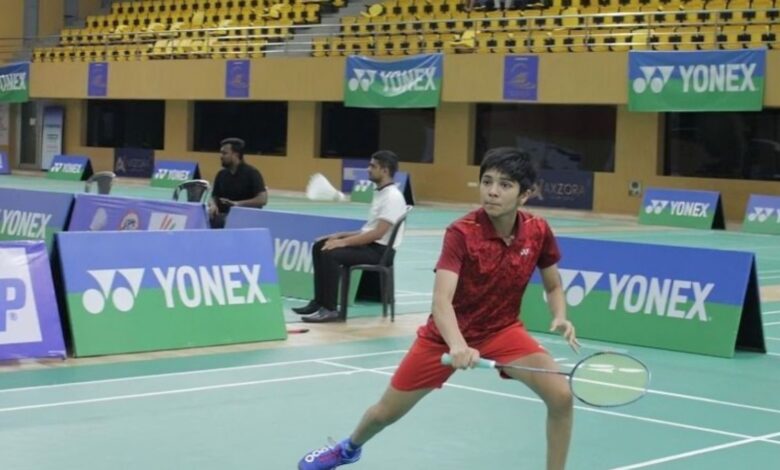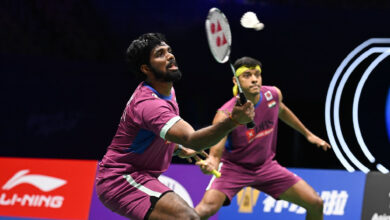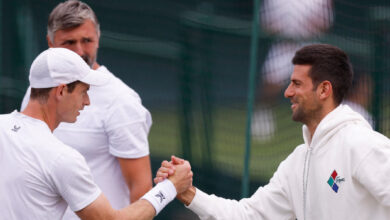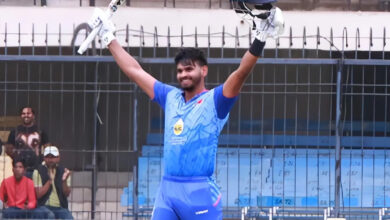How India’s U-15 winner trained in China, won local tournament at 6 | Badminton News

Rabinarayan Patri knows a thing or two about China and badminton. He informs that there is no “trophy culture” on the junior circuit of the badminton capital of the world — the tournament winners get medals and better quality racquets.He should know. His daughter, Tanvi, won a local tournament as a resident of China, at Kunshan, when she was just six years old. And on Sunday, Tanvi, now 13, won her first international title, the Asian Under-15, at China’s Chengdu.
It was in China — a country known for its tough training and an assembly line of champion shuttlers — that Tanvi picked up the sport and trained in its fundamentals for two-and-a-half years.
Patri, who was born in Odisha’s Balasore, is a software professional with Cognizant. In 2015, the company gave him a chance to work with Nike’s sports vertical. Patri had other options, he could have gone to the US, but, on a whim, he opted for China’s Jiangsu province.
“I chose China; though Jiangsu is small, it is sports-oriented and known as their biggest table-tennis and badminton hub,” he explains. “After office, I would play at a near court. I loved badminton in college, but there were no facilities back then. Tanvi followed me to the courts and a local centre coach was very friendly and interested in training her,” he recalls.
Tanvi’s fundamentals were honed at one of the finest shuttle hubs in China. “For footwork, they would actually teach her how to place the foot in striding — it was like the ABCD of badminton for the first six months. She had to practice the service, 200-300 a day, which I’ve never seen in India, because the game starts there,” he recalls. “Children don’t usually smash when that young. But her coaches would smash at her body, so her defence improved quickly; and because children like to respond in kind, she started copying smashes,” he says.
India’s Tanvi Patri clinched the under-15 girls singles title at the Badminton Asia U-17 & U-15 junior championships. (BAI Media)
As was the system in China, the local coaches — Zhang Lei and Wu — would urge Patri to remain the courtside for three days a week. “Their coaches teach parents too, and tell them to practice at home before returning the next day. So I stood for four hours, picking up stuff. I also got a net installed at my apartment in China, so her net-game got sharp,” he says, adding that he always had 200-300 shuttles stocked at home.
After the Patris returned to India in 2020, the videos of little Tanvi doing her drills were sent to the coaches at the Prakash Padukone Badminton Academy (PPBA) in Bengaluru, and she was invited to train there. She is now under the wings of the PPBA and the NGO, Olympic Gold Quest.
PPBA coach Sagar Chopda says Tanvi’s strong technical base was evident from the outset. “She has trained in China, so she is technically very strong —everything, from her movement to court coverage to the sense of when to play a stroke. There are some shuttles which we, as coaches, think she won’t reach, but she gets under them. This is something very rare in a 13-year-old,” says Chopda.
Tanvi’s mother, Sailabala, works with Infosys in Bengaluru now. Her interest in badminton was limited, but she got Tanvi started on a fitness routine when in China.
“We had a large Olympic-standard stadium with synthetic track and football field behind our house in China. Everyone would train there, so if you didn’t run you felt like a lazy person. It was a free facility, so my wife and I started running, and Tanvi followed. She was doing five kilometres daily when she was seven-and-a-half years old,” recalls Patri.
What Tanvi misses in Bengaluru is her second-love, skating. “She learned to skate in China… She loved going fast, I encouraged skating because it helps her stay balanced on a badminton court. If you see, she is rarely imbalanced, or falling down,” says Patri.
The family’s commitment to badminton has been relentless. When the Covid pandemic struck, they shifted to rural Odisha. “Some may have used it as an excuse to stop training. But Tanvi would ins on swimming in a large temple pond which had clean water and not many people. And we played at a small court on the outskirts, where there were only teenaged boys and older men. She was only nine years old, but she played with them. That accelerated her skill and she grew competitive. Her thinking was that if he beats me, I’ll beat him too,” he recalls.
Patri recounts how he seeks to shield Tanvi from dractions. “Everyone at the academy has headphones on, lening to music. But there could be side-effects like deafness and loss of balance which we aren’t aware of,” he says. “On the whole, I want her away from all electronics, including mobile phones,” he says.
With athletes who find early success, there is always the fear of burnout and overtraining. But Patri clarifies that he’s not pushing too hard. “She has the willingness to train and is motivated; we won’t push her. There’s no need to force her to train. But the ultimate target is Olympics gold, and I told her no Indian (female) has taken it yet. The Olympics is so far, but if she’s okay, we can target 2028. In the meantime, there are smaller Olympics like the All-England and World Championship,” he says.
While he is a Lin Dan fan, and often told Tanvi stories of the Chinese legend and Michael Phelps, Patri says he couldn’t stop her from becoming a Viktor Axelsen fan. “Earlier, Lin Dan yes. But now, she has pictures of Viktor Axelsen everywhere. Posters, stickers and everything,” he says.
It should be alright, since Axelsen became a double Olympic champion at Paris, after his gold at Tokyo.







